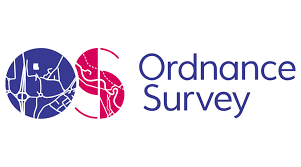
Making the World Work
Better Together
At OGC, we’re more than 450 organizations strong—united by a shared passion for geospatial innovation. For 30 years, we’ve been the place where collaboration and experimentation come to life. Together, we test bold ideas, push boundaries, and solve problems that matter. By driving breakthroughs in interoperability, we unlock the power of geospatial data to shape a better future.
OUR STRATEGIC & PRINCIPAL MEMBERS

The Value of Community
We’re a dynamic community of innovators from different sectors, countries and backgrounds across the geospatial world. The spirit of open collaboration and the dedication of this community are what drive the entire industry forward. It’s not just about technology; it’s about people working together to make something bigger than any one organization. The future of OGC is, as it has always been, in the hands of the people who believe in its mission.

The Importance of Standards
We live in a world of constant change. As change in the geospatial ecosystem accelerates, standards become ever more important. They are key to keeping pace, offering a shared language to ensure interoperability so that disparate platforms and solutions can use geospatial data seamlessly. OGC Standards already underpin thousands of implementations. They evolve from communities of practice trying to solve challenges like turning massive amounts of image data into photo-realistic 3-D scenes of cities or helping national mapping agencies respond to billions of requests for geospatial data every day.

The Power of Collaboration
Our members come together to solve the biggest challenges with cutting-edge research across a range of dynamic fields including climate change, disaster resilience, and the Metaverse. Through our Collaborative Solutions and Innovation Program (COSI), we ensure that OGC Standards aren’t static, responding swiftly to shifts in evolving sectors like AI, sensors, cloud computing and digital twins. COSI brings OGC members together to engage in pilots and testbeds, and these projects are sponsored by some of the world’s leading geospatial players.

The Benefits of Membership
At OGC, we bring together leaders from government, business, research institutions, startups, and across the geospatial community to drive real-world solutions to pressing global challenges like flood management, urban planning, and food security. Through interactive events, collaborative initiatives, matchmaking opportunities, and access to valuable grant funding, our members build strong connections that spark transformative progress. With impactful networking, thought leadership, and digital showcases of the latest breakthroughs, OGC empowers you to connect, innovate, and pioneer geospatial solutions that make a difference — and be part of a community driving meaningful change.
























